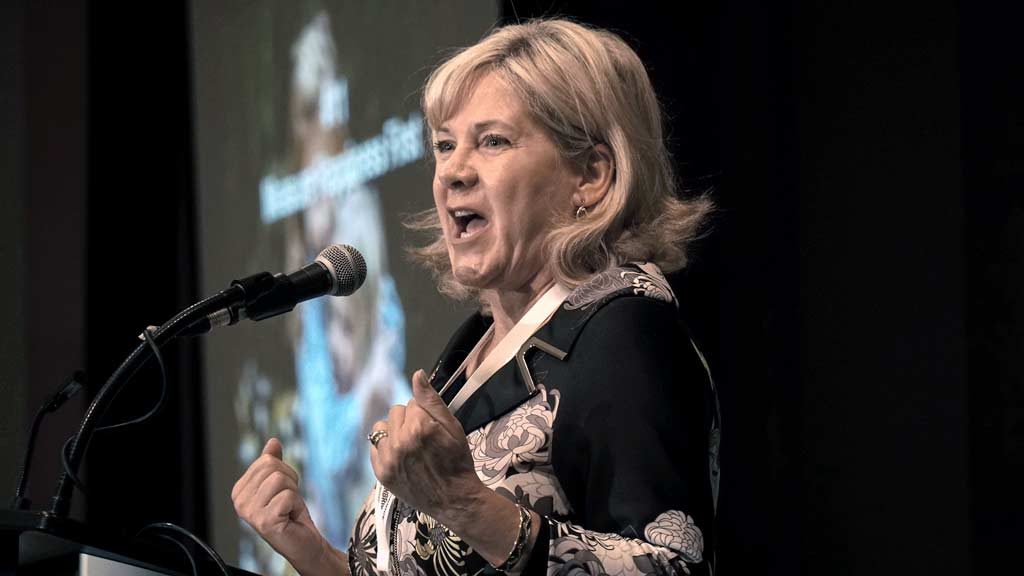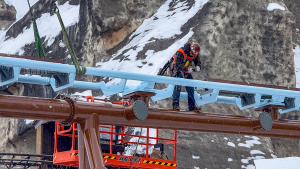When the construction industry finally moves from the industrial age into the digital one, “it will have a massive impact on the planet…because it is the largest industry on the planet.”
That’s the word of architect Teresa Coady, who maintains that impact can be positive if the building/development industry rethinks the way it builds.
“In the past 30 years, we’ve taken more out of the Earth than all of human history…and 70 per cent of it is already back in landfill,” she said. “We’re not building what we need, we are building for profit.”
Coady was a speaker at the 14th annual Green Building Festival recently in downtown Toronto presented by Sustainable Buildings Canada. She presented pointers from her new book, Rebuilding Earth, which covers 12 principles of “conscious construction.”
She said building and development patterns have undermined the physical, mental and emotional health of people.
Among her 12 principles are: keeping cities green; prioritizing the use of solar; protecting forests; and using distributed energy systems.
Cities need to be designed for humans, not machines, she said.
Diagnosed with an autoimmune disorder at age 18 and told she would be blind and wheelchair-confined by age 30, Coady is well beyond those years and healthy. She chose at a young age to learn to “live better because I realized our cities are making us sick.”
Coady told delegates that construction is outpacing population growth and projected to increase by almost four times the pace of the population by 2050.
North America, China and Europe are overbuilt by a factor of 1.2 — meaning that for every household required there are 1.2 houses built, she said. “We need to start building only what is needed and design it to human scale.”
Coady said it is a myth that cities need to build skyscraper residences to increase population density, as Paris, one of the most densely populated cities in Europe, is predominately comprised of buildings six storeys or lower.
Water and wetlands also need to be protected, she said. Salt water makes up 97 per cent of the planet’s water while two per cent is locked in the ice caps and only one per cent is fresh water.
Coady told delegates that it is time to mandate environmental product declarations (EPDs) which are a measure of the life cycle of a product. “What it will do — once we stop building more and reusing more — is allow us to close our landfills.”
She pointed to the importance of the comprehensive wealth model as laid out by the International Institute for Sustainable Development. It contains measurements of the resilience of a community to climate change and the health of that community’s ecosystems and residents.
The author stressed the importance of limiting man-made carbon dioxide (CO2) emissions. Scientists say CO2 emissions need to be less than 22 gigatonnes by 2050. Emissions from buildings and vehicles are currently about 33 gigatonnes, but another 20 gigatonnes are emitted from sources such as land-use changes.
While the use of solar power has grown exponentially in recent years, it is projected to only represent about three per cent of all electrical generation in 2040, and, “It is not enough,” said Coady.
She said designs that prioritize natural lighting are critical because studies show that daylight is a major factor in well-being.
Respect and protect eco-corridors and abandon the paved grid, she added. “We think the paved grid needs to be there, but it doesn’t.”
If growth patterns continue as projected by 2050, about 80 per cent of the world’s population will live in coastal cities to the environmental detriment of inland areas up to 400 miles away — many of which will become desert wastelands, she said. “That is where we see more wildfires and more emissions.”
Coady said architects, engineers, developers and researchers must speak up to effect change and they might be surprised at how responsive policymakers are to what they have to say.
“We are on the brink of a huge shift in our industry. We need to wake up, take action and say, ‘Hey, we have solutions here.’ ”





Recent Comments
comments for this post are closed